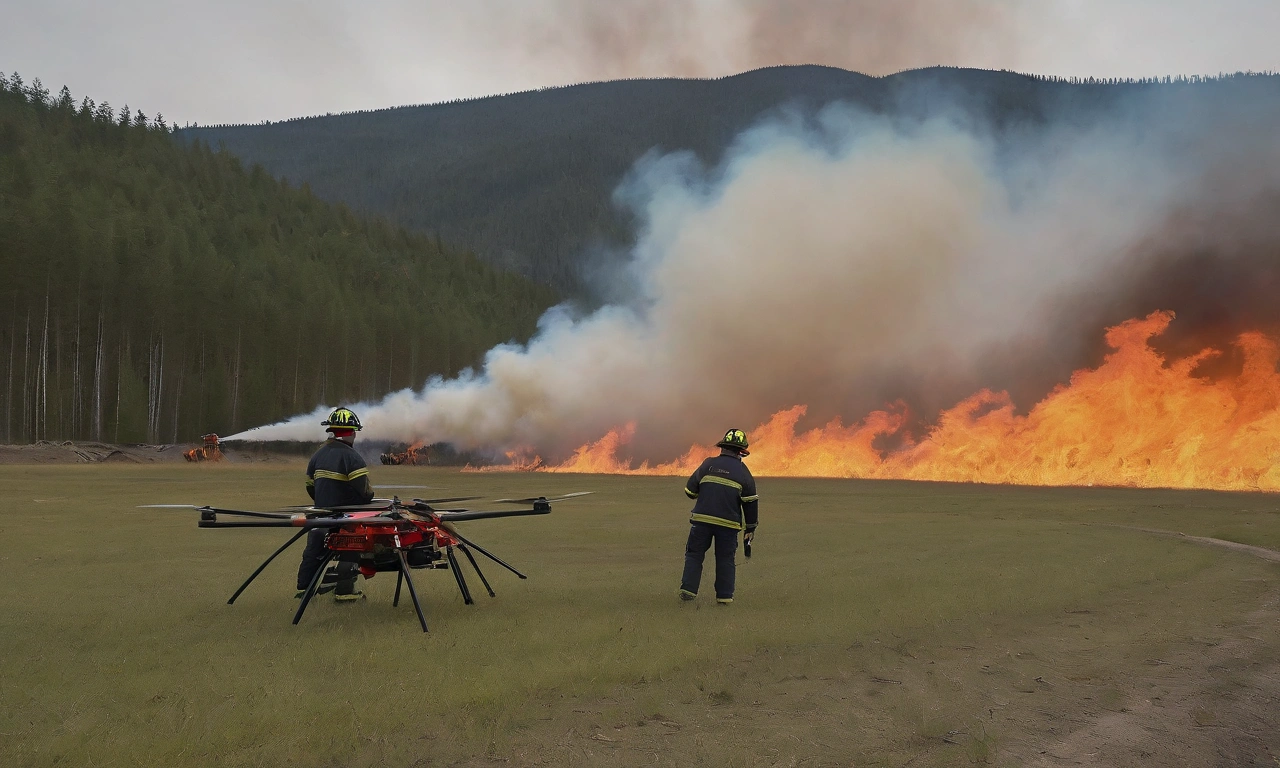The use of Unmanned Aerial Vehicles (UAVs), or drones, in the fight against wildfires has grown significantly in recent years, with many North American firefighting agencies now utilizing these high-tech tools to help them better monitor and suppress fires. UAVs offer a number of advantages over traditional firefighting methods, including the ability to cover large areas quickly, access hard-to-reach locations, and gather real-time data on the fire’s behaviour.
One of the key benefits of UAVs in wildfire suppression is their ability to detect and map the location of the fire. Many UAVs are equipped with thermal imaging cameras, which can detect heat signatures and help firefighters locate the hottest spots within a fire. This allows them to target their efforts more effectively, as they can identify areas of the fire that are in most need of suppression. In addition, some UAVs are equipped with LiDAR (Light Detection and Ranging) technology, which allows them to create high-resolution maps of the area affected by the fire. This helps firefighters identify the fire’s perimeter and make more informed decisions about how to contain and extinguish the blaze.
Another important role of UAVs in wildfire suppression is the ability to drop payloads, such as fire retardant or water, directly onto the fire. This allows firefighters to quickly suppress hot spots and prevent the fire from spreading. Some UAVs are specifically designed for this purpose, with drop systems that can accurately deliver payloads to targeted areas. This can be especially useful in cases where it is not safe or practical for firefighters to access certain areas, such as steep or rugged terrain.
In addition to their use in suppression efforts, UAVs can also be used to gather valuable data on the fire, including its size, location, and intensity. This information can be used to develop more effective firefighting strategies and make better predictions about the fire’s behaviour. For example, if a UAV is able to detect that the fire is spreading in a certain direction, firefighters can take steps to prevent it from reaching certain areas or structures.
There are a number of manufacturers that produce UAVs specifically for use in wildfire suppression. Some examples include:
- DJI: DJI is a leading manufacturer of UAVs for a variety of applications, including firefighting. Their Phantom 4 RTK model is specifically designed for mapping and surveying, with high-resolution cameras and an RTK (Real-Time Kinematic) GPS system for accurate positioning.
- AeroVironment: AeroVironment is another major player in the UAV industry, with a range of drones designed for various applications, including wildfire suppression. Their Puma AE model is a small, lightweight UAV that is capable of carrying and dropping payloads, making it well-suited for firefighting duties.
- FireFLY6: The FireFLY6 is a purpose-built UAV specifically designed for use in wildfire suppression. It is equipped with a high-resolution thermal imaging camera and a drop system that can deliver payloads of up to 2.5 pounds.
- UAC Kestral: The Kestral UAV is a dual hybrid design which can take off and land vertically and is powered by electricity and an ICE for forward flight. With 10+ hours of endurance and a 10kg payload, this machine can fly all day or all night to provide mission-critical support on wildfires. With a full hyperspectral camera package available the Kestral is one of the most capable but probably also it the most expensive of the bunch.
Overall, the use of UAVs in fighting wildfires has the potential to revolutionize the way these blazes are managed. With their ability to cover large areas quickly, access hard-to-reach locations, and gather real-time data, UAVs are an invaluable tool for firefighters working to keep communities safe. As the technology continues to advance, it is likely that we will see even more widespread adoption of UAVs in wildfire suppression efforts across North America.

